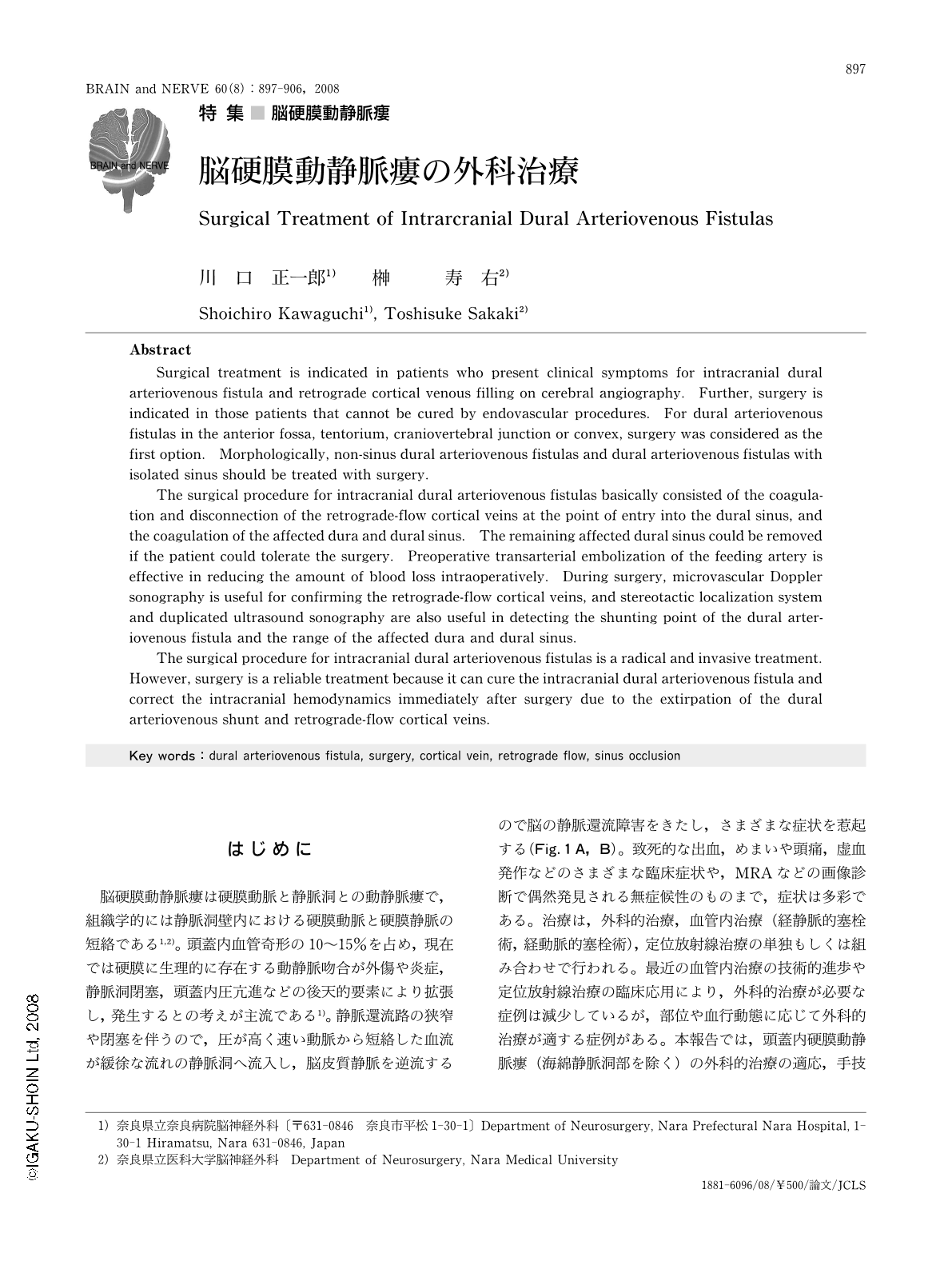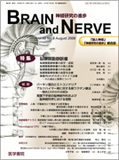Japanese
English
- 有料閲覧
- Abstract 文献概要
- 1ページ目 Look Inside
- 参考文献 Reference
はじめに
脳硬膜動静脈瘻は硬膜動脈と静脈洞との動静脈瘻で,組織学的には静脈洞壁内における硬膜動脈と硬膜静脈の短絡である1,2)。頭蓋内血管奇形の10~15%を占め,現在では硬膜に生理的に存在する動静脈吻合が外傷や炎症,静脈洞閉塞,頭蓋内圧亢進などの後天的要素により拡張し,発生するとの考えが主流である1)。静脈還流路の狭窄や閉塞を伴うので,圧が高く速い動脈から短絡した血流が緩徐な流れの静脈洞へ流入し,脳皮質静脈を逆流するので脳の静脈還流障害をきたし,さまざまな症状を惹起する(Fig.1A,B)。致死的な出血,めまいや頭痛,虚血発作などのさまざまな臨床症状や,MRAなどの画像診断で偶然発見される無症候性のものまで,症状は多彩である。治療は,外科的治療,血管内治療(経静脈的塞栓術,経動脈的塞栓術),定位放射線治療の単独もしくは組み合わせで行われる。最近の血管内治療の技術的進歩や定位放射線治療の臨床応用により,外科的治療が必要な症例は減少しているが,部位や血行動態に応じて外科的治療が適する症例がある。本報告では,頭蓋内硬膜動静脈瘻(海綿静脈洞部を除く)の外科的治療の適応,手技について概説する。
Abstract
Surgical treatment is indicated in patients who present clinical symptoms for intracranial dural arteriovenous fistula and retrograde cortical venous filling on cerebral angiography. Further, surgery is indicated in those patients that cannot be cured by endovascular procedures. For dural arteriovenous fistulas in the anterior fossa, tentorium, craniovertebral junction or convex, surgery was considered as the first option. Morphologically, non-sinus dural arteriovenous fistulas and dural arteriovenous fistulas with isolated sinus should be treated with surgery.
The surgical procedure for intracranial dural arteriovenous fistulas basically consisted of the coagulation and disconnection of the retrograde-flow cortical veins at the point of entry into the dural sinus, and the coagulation of the affected dura and dural sinus. The remaining affected dural sinus could be removed if the patient could tolerate the surgery. Preoperative transarterial embolization of the feeding artery is effective in reducing the amount of blood loss intraoperatively. During surgery, microvascular Doppler sonography is useful for confirming the retrograde-flow cortical veins, and stereotactic localization system and duplicated ultrasound sonography are also useful in detecting the shunting point of the dural arteriovenous fistula and the range of the affected dura and dural sinus.
The surgical procedure for intracranial dural arteriovenous fistulas is a radical and invasive treatment. However, surgery is a reliable treatment because it can cure the intracranial dural arteriovenous fistula and correct the intracranial hemodynamics immediately after surgery due to the extirpation of the dural arteriovenous shunt and retrograde-flow cortical veins.

Copyright © 2008, Igaku-Shoin Ltd. All rights reserved.


